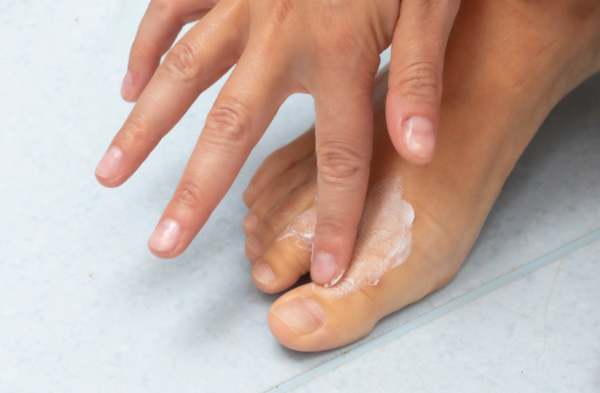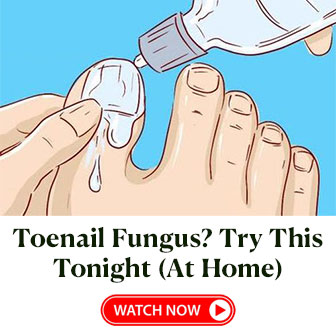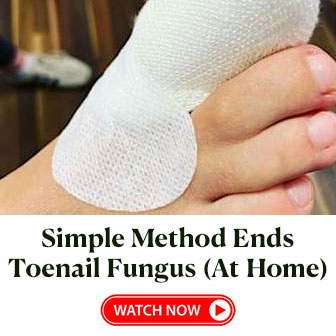Toothpaste For Toenail Fungus: Can It Really Help?
Contents

Toenail fungus is a common and frustrating condition that can cause discomfort, discoloration, and even permanent damage to the nails if not treated properly.
While there are various treatments available, some people are turning to unconventional remedies, one of which is toothpaste.
But can toothpaste really help with toenail fungus? Let’s explore this remedy in detail and see if it holds any truth.
Understanding Toenail Fungus
Toenail fungus, also known as onychomycosis, occurs when a fungus infects one or more nails, causing them to become discolored, thickened, brittle, and even distorted.
The infection is often caused by dermatophytes, which thrive in warm, moist environments like sweaty socks and shoes.
While toenail fungus is not usually dangerous, it can be quite unsightly and cause discomfort, especially if left untreated.
Why Do People Turn to Toothpaste for Toenail Fungus?
Toothpaste, particularly the types containing ingredients like baking soda, hydrogen peroxide, and fluoride, is often recommended as a home remedy for toenail fungus.
The idea behind this treatment is that these ingredients might help kill the fungi, reduce inflammation, or lighten the discoloration associated with the infection. But is there any truth to these claims?
1. Baking Soda
Baking soda is a well-known ingredient in toothpaste and has antifungal properties. It is sometimes suggested that baking soda could help dry out the fungus and inhibit its growth. However, the concentration of baking soda in toothpaste is quite low compared to antifungal treatments specifically designed for fungal infections. While baking soda may have some mild benefits, it’s unlikely to be strong enough to eliminate toenail fungus.
2. Hydrogen Peroxide
Some toothpaste brands contain hydrogen peroxide, which is a powerful disinfectant. Hydrogen peroxide can help disinfect minor cuts or wounds, and it has antifungal effects in higher concentrations. However, the amount of hydrogen peroxide in toothpaste is minimal, and its effectiveness against toenail fungus is still up for debate. While it might offer a slight cleaning benefit, it isn’t a reliable solution for curing toenail fungus.
3. Fluoride
Fluoride is another common ingredient in toothpaste, primarily known for preventing cavities. While fluoride is great for oral health, there’s no evidence suggesting it has any significant impact on toenail fungus. Using fluoride toothpaste on your nails is unlikely to treat the infection.
4. Antibacterial Effects
Some people claim that the antibacterial properties in toothpaste can help combat toenail fungus. While it’s true that toothpaste can kill some bacteria, fungal infections are caused by a different type of microorganism fungi. Antifungal agents specifically target fungi, and using toothpaste may not address the root cause of the infection.
The Truth About Toothpaste for Toenail Fungus
While it may be tempting to use toothpaste as a home remedy for toenail fungus, it’s important to approach this method with caution.
Toothpaste is not designed to treat fungal infections, and its effectiveness in combating toenail fungus is not backed by scientific research.
1. Limited Effectiveness
Toothpaste does contain ingredients like baking soda, which has mild antifungal effects. However, these effects are not strong enough to cure an active fungal infection. Toenail fungus typically requires more potent treatments, such as antifungal creams, oral medications, or professional interventions.
2. Temporary Relief
Some people report that using toothpaste helps with the appearance of their toenails temporarily. The exfoliating action may provide short-term relief by clearing away dead skin or reducing some of the discoloration. However, this will not address the underlying fungal infection, which could continue to worsen if not properly treated.
3. Potential Irritation
Using toothpaste on your toenail could lead to irritation or a rash, especially if you have sensitive skin or are allergic to certain ingredients. It’s always a good idea to patch-test any product you apply to your skin, even if it’s something as common as toothpaste.
What Are the Best Treatments for Toenail Fungus?
While toothpaste might offer some temporary benefits, it’s not a substitute for effective treatments that are specifically designed to treat toenail fungus.
Here are some proven options for addressing this condition
- Antifungal Creams and Ointments: Over-the-counter antifungal creams can help treat mild cases of toenail fungus. Look for products that contain clotrimazole or terbinafine, which are known to be effective against fungal infections.
- Prescription Medications: If the infection is severe, a healthcare provider may prescribe oral antifungal medications like terbinafine or itraconazole. These medications can help treat the infection from the inside out.
- Laser Treatment: Some healthcare professionals offer laser treatments that target the fungus with focused light, helping to kill the infection without the need for medication.
- Surgical Removal: In extreme cases, a doctor may recommend surgically removing the infected toenail to allow for better treatment of the underlying fungus.
Prevention Tips for Toenail Fungus
The best way to deal with toenail fungus is to prevent it from occurring in the first place. Here are some tips to help keep your feet healthy:
- Keep your feet dry: Fungi thrive in moist environments, so always dry your feet thoroughly, especially after a shower.
- Wear breathable shoes: Opt for shoes that allow air circulation to reduce moisture buildup.
- Use antifungal powder: Sprinkling antifungal powder in your shoes can help keep them dry and reduce the risk of infection.
- Change socks regularly: If your feet sweat a lot, change your socks during the day to prevent moisture buildup.
- Avoid walking barefoot in public places: Public pools, locker rooms, and gyms can harbor fungal spores, so wear flip-flops or protective footwear in these areas.
Conclusion
While toothpaste is not a medically recognized treatment for toenail fungus, some people report experiencing temporary improvements.
Ingredients like baking soda and hydrogen peroxide may provide mild antifungal or drying effects, potentially offering relief or cosmetic benefits, such as lightening the nail’s appearance.
However, toothpaste alone is unlikely to fully eliminate the infection. For effective treatment, it’s better to use antifungal medications specifically designed for toenail fungus, either over-the-counter or prescribed by a doctor.
Toothpaste might help in a pinch, but professional treatments are the most reliable and proven solution for long-term results.



